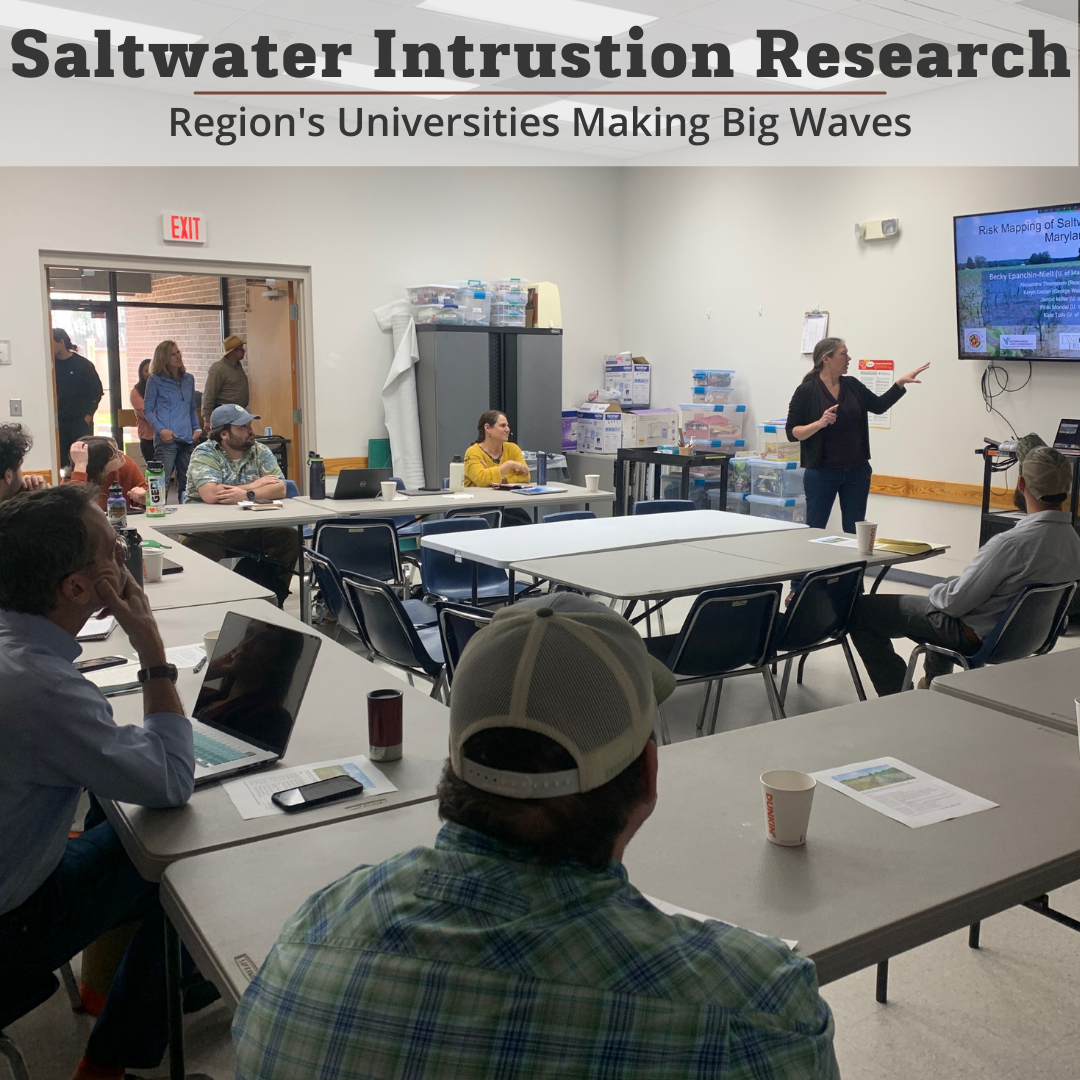Saltwater Intrusion Research

Destructive storm surges and land loss are real enough threats to motivate the development of adaptation strategies for sea level rise here on the Eastern Shore. But what do you do when tracts of land are becoming too salty to farm? Funded by the National Fish and Wildlife Foundation and spearheaded by the Harry R. Hughes Center for Agro-Ecology, a group of scientists from the University of Maryland, University of Delaware, and George Washington University are working to better understand this emerging reality for a region with such strong cultural and economic ties to agriculture.
Given the impacts of soil salinity observed by ESLC staff during our annual visits to protected lands, we were eager to join the cohort for their Saltwater Intrusion Stakeholder Meeting in Princess Anne in February. Our land conservation staff were particularly interested in the progress made to identify and better predict areas most impacted by increased soil salinity.
Led by Dr. Becky Epanchin-Niell at the University of Maryland, the cohort is developing a tool to map risks to productivity from saltwater intrusion for landowners as they plan for the future of their property. The tool pulls from a variety of data sources ranging from satellite imagery of salt patches in fields to soil sampling and testing. Working with ESLC and our generous landowner partners, the research team was able to gather samples from protected lands throughout Dorchester County – on the front lines of sea level rise and saltwater intrusion.
Coupled with mapping efforts are investigations and trials of alternative uses on lands no longer viable for traditional row crop production. Researchers have explored cultivating Miscanthus or our native Switchgrass for use in poultry litter. These perennial grasses not only withstand far higher salinity but can also help in the fight against the invasive Phragmites australis that dominates Eastern Shore wetlands and shorelines by planting in areas cleared of the prolific reed. Farmers may also find opportunities in emerging markets such as quinoa, which has been found to be amenable to saltier soils.
ESLC staff will continue to follow these developments and work closely with researchers to bolster their data, especially if it can provide landowners and managers with the information they need to better steward their changing landscapes.






